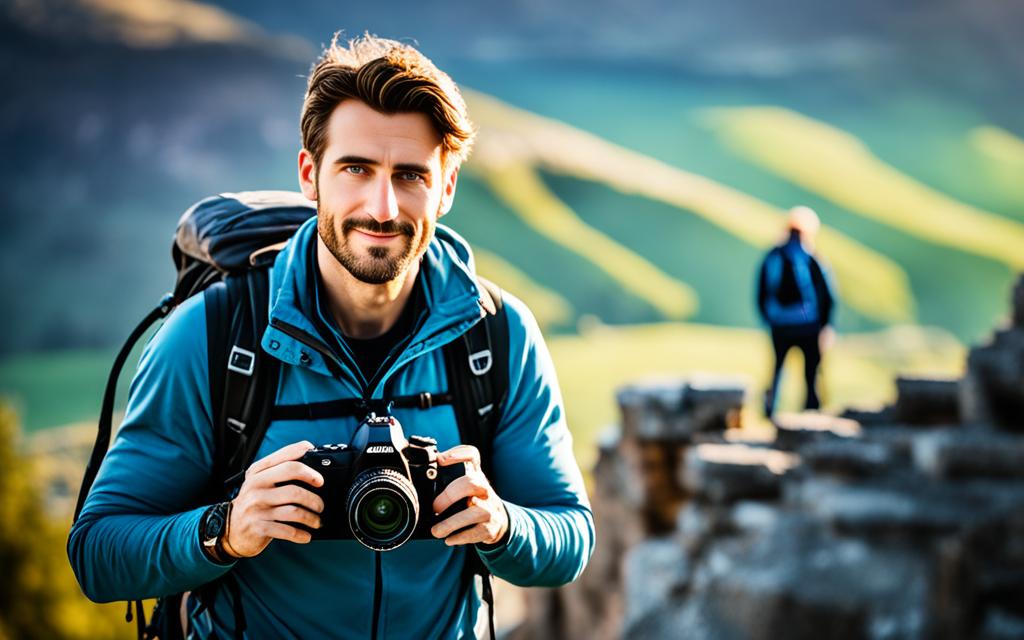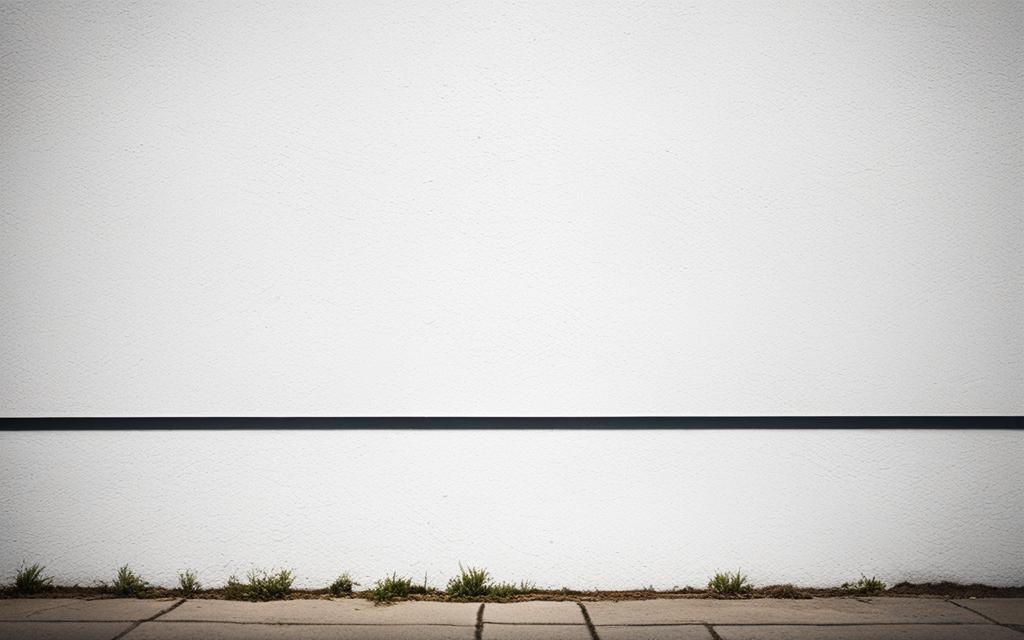Welcome to our in-depth exploration of photography as an art form. In this article, we will delve into the creative insights that photography offers, unlocking your potential and elevating your visual storytelling. Discover how photography can transcend mere snapshots and become a powerful medium for artistic expression.
Throughout history, photography has evolved from a scientific invention to a recognized art form. It has given birth to countless masterpieces, capturing moments and emotions with a unique perspective. From the pioneers who first experimented with the medium to the contemporary artists who push the boundaries of what is possible, photography continues to inspire and captivate audiences.

Embracing Photography as an Art – Creative Insights
Key Takeaways:
- Photography is more than just a hobby or profession – it is a form of artistic expression.
- Understanding the evolution of photography helps us appreciate its significance as an art form.
- Through photography, we can capture and convey powerful emotions and stories.
- Composition and visual aesthetics play a crucial role in creating impactful photographs.
- Photography can be a powerful tool for self-expression and connecting with others.
St. Louis Photographers
| Rebecca Bodicky | JP Agnew | Don Massey | Jason Turner |
| Megan Maher | Jane Linders | Paul Koenig | Armando Heredia |
| Michael Moss | Lynn Terry | Gary Eaves | Steve Truesdell |
| Matthew Hemminghaus |
The Evolution of Photography as an Art
Photography has come a long way since its inception, evolving from a technical process to a recognized art form. This section explores the historical journey of photography, highlighting the pioneers, techniques, styles, and the growing acceptance of photography in the realm of fine art.
“Photography takes an instant out of time, altering life by holding it still.” – Dorothea Lange
At its birth in the early 19th century, photography was primarily used as a means of documentation and recording reality. However, as advancements in technology and artistic innovation emerged, photographers started to embrace the medium as a tool for creative expression. Individuals like Ansel Adams, Henri Cartier-Bresson, and Edward Weston pushed the boundaries of photography’s artistic potential.
New techniques and styles began to emerge, such as the pictorialist movement that aimed to emulate the aesthetics of traditional painting and the straight photography movement that focused on capturing pure and unmanipulated representations of reality. These movements laid the foundation for photography’s recognition as a legitimate art form.
As photography continued to evolve, it gained wider acceptance in the art world. Art galleries started showcasing photographic works alongside paintings and sculptures, further solidifying its status as an art form. The advent of influential exhibitions like Alfred Stieglitz’s “291” gallery and the inclusion of photography in prestigious museums further validated its place in the art world.
Key Milestones in the Evolution of Photography as an Art:
- The invention of the first permanent photographic process by Louis Daguerre in 1839
- The emergence of artistic movements: Pictorialism, Straight Photography, Surrealism, and Photojournalism
- The establishment of galleries and museums dedicated to photography
- The introduction of color photography and the exploration of abstract and experimental photography
- The integration of digital technology, giving photographers unprecedented creative possibilities
Photography as type of art continues to evolve, with contemporary photographers pushing boundaries and exploring new techniques. It has become a platform for visual storytelling, personal expression, and social commentary.
Maybe schools in St. Louis offer student a photography classes or clubs to join.
Through the evolution of photography as an art, we have witnessed the power of an image to evoke emotions, challenge perceptions, and provoke thought. As we delve deeper into the creative possibilities of photography, we discover its ability to transcend mere representation and become a medium for personal and societal exploration.
| Photographers | Artistic Movements | Key Contributions |
|---|---|---|
| Ansel Adams | Straight Photography | Advocated for the purity and natural beauty of the environment through his landscape photography |
| Cindy Sherman | Postmodern Photography | Explored identity, issues of gender, and the role of women in society through self-portraiture |
| Man Ray | Dadaism and Surrealism | Experimented with photograms and unconventional techniques, blurring the lines between reality and imagination |
| Dorothea Lange | Documentary Photography | Captured the struggles of the Great Depression, creating iconic images that evoke empathy and social awareness |
Capturing Emotions and Expressions Through Photography
In the realm of artistic expression, photography holds a unique position, allowing a St. Louis artist to capture emotions and expressions in powerful and evocative ways. Whether through portraiture or documentary photography, visual storytellers harness the medium to convey the depth of human experiences and spark emotional responses in their audience.
When a photographer captures a genuine moment of joy, sorrow, love, or surprise, they freeze that emotion in time, immortalizing it within the frame of their image. These frozen moments not only serve as a testament to the subject’s feelings but also invite viewers to connect with the captured emotion on a deep and personal level.
The art of capturing emotions and expressions through photography is a delicate balance of technical skill, empathy, and timing. It requires a keen sense of observation to identify and anticipate fleeting moments and an understanding of how light, composition, and perspective can enhance the emotional impact of an image.
“Photography is a way of feeling, of touching, of loving. What you have caught on film is captured forever… it remembers little things, long after you have forgotten everything.” – Aaron Siskind
The Power of Portraiture
Portraiture, one of the most enduring genres of photography, allows photographers to delve into the intricacies of human emotions and expressions. Through the careful composition, lighting, and direction, photographers can reveal the essence of their subjects, showcasing their vulnerable, raw, and authentic selves.
By establishing a connection with their subjects, photographers create an environment where emotions can unfold naturally. They provide a safe space for individuals to express themselves and capture the subtleties of their personalities, capturing moments of introspection, happiness, sadness, or resilience.
Documenting Life’s Stories
Documentary photography, on the other hand, acts as a portal into real-life narratives, offering a window into different cultures, environments, and personal experiences. Photographers step into the lives of their subjects, immersing themselves in their stories, and capturing the emotions tied to significant events, struggles, or triumphs.
Through documentary photography, photojournalists and visual storytellers shed light on societal issues, convey the human condition, and evoke empathy and understanding. By freezing these powerful moments, they preserve history and create a platform for dialogue and change.

The Art of Visual Storytelling
In both portraiture and documentary photography, the photographer’s role extends beyond technical skill. It involves empathy, the ability to connect with one’s subject, and a deep understanding of the stories being told.
Through careful composition, lighting, and editing, photographers guide their viewers’ gaze, leading them through a visual narrative that elicits emotional responses. They masterfully choose which elements to include or exclude, intuitively framing their images to evoke a specific emotional atmosphere.
Photography has the power to make us laugh, cry, and reflect. It offers a glimpse into the vast spectrum of human emotions, reminding us of our shared experiences and our capacity for empathy. By capturing emotions and expressions, photographers remind us of the beauty and complexity of the human spirit.
The Art of Composition and Visual Aesthetics
Composition and visual aesthetics are crucial elements in photography, allowing photographers to create captivating and visually appealing images. By understanding the principles and techniques employed by photographers, you can enhance your own compositions and develop a unique visual style.
In photography, composition refers to the arrangement and placement of various elements within the frame. It involves considering the balance, symmetry, leading lines, perspective, and framing to create a harmonious and visually pleasing image. By carefully selecting the elements to include and arranging them thoughtfully, photographers can guide the viewer’s eye and convey their intended message.
Many restaurants in St. Louis hire photographers for pictures of their establishment or popular menu items.
Visual aesthetics in photography focus on the overall beauty and appeal of an image. It considers factors such as light, color, texture, and patterns to create visually impactful photographs. Photographers often use techniques like rule of thirds, golden ratio, and color theory to enhance the aesthetics and evoke specific emotions in their images.
“Composition is the strongest way of seeing” – Edward Weston
Mastering composition and visual aesthetics in photography allows you to effectively communicate your artistic vision. Here are some key principles to keep in mind:
1. Rule of Thirds:
The rule of thirds is a compositional technique that involves dividing the frame into a 3×3 grid using two horizontal and two vertical lines. By placing key elements along these lines or at their intersections, you can create a visually appealing and balanced image. This technique adds interest and guides the viewer’s eye through the photograph.
2. Leading Lines:
Leading lines are lines within the image that draw the viewer’s gaze towards a specific point of interest. These lines can be natural or man-made, such as roads, rivers, or architectural elements. Utilizing leading lines helps create depth and guides the viewer’s eye through the composition, adding visual interest and emphasizing the subject.
3. Color and Contrast:
Color plays a vital role in photography, evoking emotions and setting the mood of an image. Understanding color theory and how different colors interact can help you create visually striking compositions. Additionally, exploring contrasts, whether it’s through contrasting colors, light and dark tones, or textures, can add depth and visual impact to your photographs.
Table: Rule of Thirds vs. Golden Ratio
| Rule of Thirds | Golden Ratio |
|---|---|
| Divides the frame into a 3×3 grid | Divides the frame in a way that the ratio of the smaller section to the larger section is equal to the ratio of the larger section to the entire frame |
| Easy to understand and apply | Presents a more complex ratio, but is seen as aesthetically pleasing |
| Provides balance and creates visual interest | Enhances natural flow and creates a sense of harmony |
By experimenting with composition and visual aesthetics, you can create powerful and visually stunning photographs. Remember to keep practicing and exploring new techniques to develop your own unique style and capture breathtaking images.
Whether you are a photographer for a STL auto dealer or even a St. Louis real estate photographer, photography allows you to express yourself through your lens.
Exploring Photography as a Means of Self-Expression
Photography goes beyond capturing images; it serves as a medium for self-expression, enabling photographers to convey personal narratives, explore identity, and form deep connections with their audience. Through the lens, photographers have the power to unleash their creativity, find their unique voice, and make a profound impact.
Photographers use various techniques, styles, and subjects to express themselves artistically. Whether it’s capturing raw emotions, exploring social issues, or reflecting on personal experiences, photography allows for endless possibilities of self-expression.
The Power of Visual Storytelling
Photographs have the ability to tell stories without words, evoking powerful emotions and sparking conversations. They allow photographers to share their perspectives, communicate their thoughts, and shine a light on matters close to their hearts.
“A photograph is a secret about a secret. The more it tells you, the less you know.” – Diane Arbus
Through photography, artists can bring attention to social injustices, highlight cultural nuances, and challenge societal norms. They can capture intimate moments, freeze time, and expose the beauty and complexity of the world we live in.
Exploring Identity and Personal Narratives
Photography also serves as a tool for self-exploration and self-discovery. It allows photographers to delve into their own identities, examine their beliefs, and document their personal journeys. By capturing their experiences and perspectives, they create visual narratives that reflect who they are and what they stand for.
Photographers often explore themes of self-identity, gender, sexuality, race, and culture through their work. They use their art to challenge stereotypes, question social constructs, and provide a platform for underrepresented voices.
By sharing their personal stories through photography, artists can connect with others who relate to their experiences, fostering empathy, understanding, and a sense of community.

Unleashing Your Creative Potential
If you’re new to photography or have been capturing images for a while, embracing it as a means of self-expression can unlock your creative potential. Photography allows you to experiment with different styles, techniques, and subjects, enabling you to find your unique visual language.
To fully express yourself through photography, follow your instincts, explore your interests, and challenge yourself to step out of your comfort zone. Trust your intuition, experiment with composition, lighting, and editing, and let your emotions guide you.
Remember, photography is a journey of self-discovery and growth. Allow it to be a platform where you can authentically express yourself, share your stories, and connect with others through the universal language of visuals.
| Photography as a Means of Self-Expression | Benefits |
|---|---|
| 1. Conveys personal narratives | – Allows photographers to share their unique perspectives and experiences – Connects with the audience on a deeper level |
| 2. Explores identity | – Provides a medium for self-exploration and self-discovery – Challenges societal norms and stereotypes |
| 3. Sparks conversations | – Visual storytelling evokes emotions and raises awareness – Creates opportunities for dialogue and social change |
| 4. Fosters creativity | – Unleashes individual artistic potential – Encourages experimentation and growth |
Conclusion
In conclusion, embracing photography as an art form opens up a world of creative possibilities. By understanding its evolution, capturing emotions, mastering composition, and using it as a tool of self-expression, you can elevate your photography from mere snapshots to captivating works of art.
Photography has come a long way since its inception, evolving from a technical process to a medium of artistic expression. It enables us to freeze moments in time, convey emotions, and explore the world through a unique lens.
Through the art of photography, we can tell stories, communicate ideas, and connect with others on a deeper, more visceral level. Whether you’re an aspiring photographer or simply appreciate the power of images, embracing photography as an art form allows you to tap into your creative potential and create visually stunning, thought-provoking works that resonate with viewers.
So, grab your camera and start exploring the endless possibilities that photography as an art form has to offer. Unleash your imagination, experiment with different techniques, and let your unique perspective shine. Embrace the art of photography, and watch as your vision transforms into captivating visual art.
FAQ
What is the significance of viewing photography as an art form?
Embracing photography as an art form allows you to tap into your creative potential, elevating your visual storytelling and expanding your artistic horizons.
How has photography evolved as an art form over time?
Photography has undergone a remarkable journey, with pioneers pushing its boundaries, new techniques and styles emerging, and a growing acceptance of photography in the realm of fine art.
How does photography capture emotions and expressions?
Through various genres like portraiture and documentary photography, photographers have the power to tell compelling stories, evoke emotional responses, and freeze moments that convey the depth of human emotions and expressions.
What is the role of composition and visual aesthetics in photography?
Composition and visual aesthetics play a crucial role in photography. By understanding principles and techniques, photographers can create visually impactful images that are aesthetically pleasing, enhancing the overall impact of their work.
How can photography be a means of self-expression?
Photography provides a unique platform for self-expression, allowing photographers to convey personal narratives, explore their own identities, and connect with their audience on a deeper, more emotional level.
What are the creative possibilities of embracing photography as an artform?
By embracing photography as an art form, you open yourself up to a world of creative possibilities. Understanding its evolution, capturing emotions, mastering composition, and using it as a tool of self-expression can transform your photographs into captivating works of art.